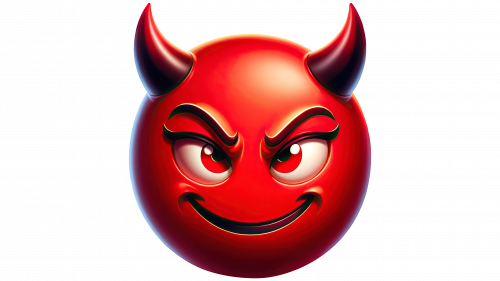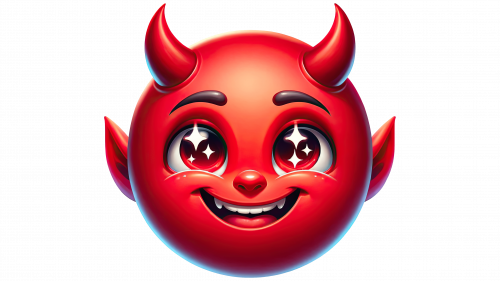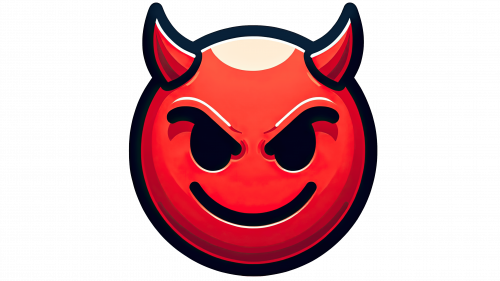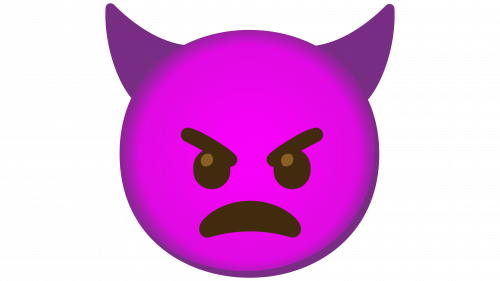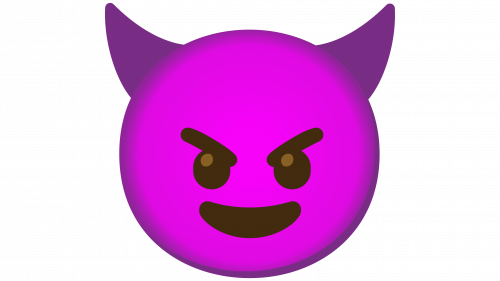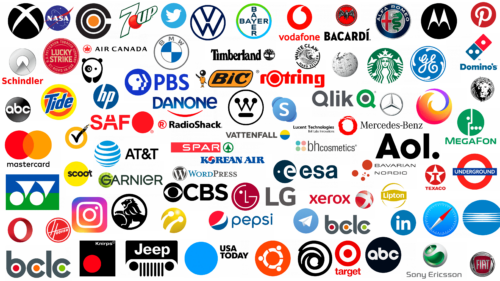Devil Emoji – a complex symbol. It can be perceived differently depending on your experience, upbringing, and attitude towards religion. If you are a follower of Christianity and regularly read the Bible, you might consider the emoji a negative sign. For those who believe in magic and the spiritual world, the smiley could be frightening. After all, it’s not just a picture but an image of a supernatural spirit.
However, if you’re ready to take a lighter and simpler approach to these issues, you’ll perceive the message with Devil Emoji with a sense of humor.
In Unicode 6.0, there are two images of this theme:
- 😈 Smiling Devil with code U+1F608.
- 👿 Evil Devil with the code U+1F47F.
To type the laughing devil symbol, hold down the Alt key and, without releasing it, type the code 128520 on the additional numeric keypad to the right. If you enter 128127, you’ll get the evil devil.
Meaning and use of the Devil Emoji
There’s a whole range of images on different platforms: growling, with a snarl, with two upward teeth, with two downward. They can be read as cunning, anger, surprise, or bewilderment. However, before using them, remember:
- The devil is really not a kind character. Therefore, you should not regularly send his sign to acquaintances.
- It’s important to know how your interlocutor perceives such images.
- Here are the main meanings that can be attributed to the red smiley with horns.
- One of the harmless interpretations of Devil Emoji. The little devil is a symbol of temptation. A hint of a cunning beauty or a handsome man against whose charms it’s impossible to resist. The smiley is flirtatious and inviting. The opponent plans to win this game gracefully and get their prize.
- Physical pleasures. The little devil hints at the relationship between a man and a woman. But it’s not about love. Rather, it’s about passion, capturing the mind, and physical pleasures. The person becomes dependent and is not guided by reason. The Devil Emoji shows that passion will lead to reckless actions, going against moral norms and the law. Often, it’s about adultery or intimacy before marriage. If you receive an emoji with this meaning, it means you’re being offered something bright and exciting but not quite decent or even illegal.
- One of the favorite activities of the devil is to do small nastiness. Jokes on the edge. Devil Emoji is a suggestion to play a prank on someone, and it’s not a pleasant surprise but something offensive, maybe even cruel.
- Triumph and Schadenfreude. Sending such an emoji might be a rival or enemy celebrating their victory. They outdid you and probably didn’t play by the rules.
- The Devil Emoji is about chains and bonds. Occultists turn to evil to achieve their desires. The image hints at magical influence, the influence on life by a non-human and unkind force.
- The drawing is a direct reference to the devil. Usually, his influence is cited in the occurrence of unfavorable circumstances or when apologizing for mistakes: “the devil must have been involved,” “the demon confused me.” The symbol is suitable for correspondence on religious topics when discussing the destroyer of human souls.
- The little devil is an element of challenge. An offer to measure strength. It’s an ominous sign. An impact on the human ego. Such a challenge turns friends into rivals, and the desire to win is realized “at any cost.”
- The opponent plans to take revenge. To get even and cause you harm.
- Rage and anger. The Devil Emoji conveys negative emotions of irritation and anger. The desire to scream and destroy because of failed plans shattered hopes and people who let you down.
Meanwhile, Smiling Devil gives all these emotions a more playful meaning, while the evil one intensifies the negative.
Final thoughts
Receiving Devil Emoji, expect unpleasant events and actions from a person or pleasant ones with negative consequences. It’s not worth playing along, getting irritated, and responding with negativity to avoid fanning the flames. It’s better to find the best in yourself and try to soften the situation to choose the right path.
In friendly messages, the emoji can play the role of a tease, a spicy accent, light hooliganism, and pranking. But only between friends. If you’re not well acquainted with your interlocutor, it’s better not to use such symbolism.
The 👿 Angry Face With Horns Emoji, often referred to as the Evil Devil Emoji, features a menacing face with furrowed brows, a scowl, and two prominent horns. This emoji is a graphic symbol of anger, malevolence, or mischievous behavior, serving as a playful yet potent representation of frustration or wickedness. Utilized to express a range of negative emotions, from mild annoyance to intense anger, the 👿 emoji captures the essence of feeling devilishly upset or mischievously inclined. It’s equally at home in contexts ranging from light-hearted teasing to expressing genuine frustration or aggression. This emoji can also symbolize a protective or defiant stance, often employed humorously to signal a “don’t mess with me” attitude.
The 😈 Smiling Face With Horns Emoji, also known as the Smiling Devil Emoji, showcases a grinning face with sharp horns, embodying the essence of mischief and playful malevolence. This emoji is a vibrant symbol of naughtiness, teasing, and devilish joy, perfect for expressing a wide range of playful sentiments. Primarily, the 😈 emoji signifies playfulness, mischief, or naughty behavior in a light-hearted and often humorous context. It’s frequently used to inject a sense of devilish fun into conversations, indicating that someone is engaging in or contemplating mischievous acts. Whether it’s a harmless prank, a secret surprise, or simply a mood of cheeky rebellion, this emoji adds a playful twist to messages.
Text examples:
- “Stuck in traffic for hours, and I’m late for an important meeting 👿🚗.” Here, the emoji is used to express intense frustration and anger over an uncontrollable situation, emphasizing the emotional turmoil caused by the delay.
- “Watch me conquer this challenging workout, no pain no gain 👿💪”. In this scenario, 👿 signifies determination and a fierce attitude toward overcoming physical challenges, with a hint of enjoying the ‘pain’ of a tough exercise regimen.
- “Plotting my revenge on the pranksters from last night’s party 👿🎉.” This example showcases the emoji’s role in conveying a playful, mischievous intent to retaliate against a prank, embodying a spirit of devilish fun.
- “Sneaking into the kitchen for a midnight snack 😈🌜.” This example illustrates the emoji’s use in conveying a sense of playful naughtiness, highlighting the thrill of a covert operation for late-night treats.
- “Managed to score front-row seats for the concert 😈🎟️.” Here, 😈 is used to express a mischievous sense of accomplishment, perhaps implying the use of cunning or cheeky tactics to obtain a coveted spot at an event.
- “Thinking of ditching work for a beach day 😈🏖️.” In this scenario, the emoji conveys a rebellious, devil-may-care attitude, suggesting a desire to break free from responsibilities for spontaneous enjoyment.
